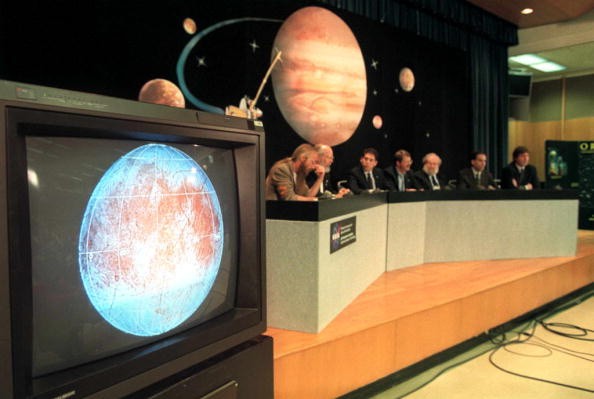A new computer modeling provided a new explanation as to why the icy shell of Jupiter's moon, Europa, has an unusual motion/rotation.

For the past few years, experts who studied Europa's ice crust were able to discover that the icy surface is probably free-floating.
Based on their research, they also identified that the moon's icy shell is rotating at a different speed than its ocean.
Now, they made another discovery, thanks to supercomputer-drive modeling. Here's what they discovered.
New Explanation for Europa's Icy Shell Rotation
According to SciTech Daily's latest report, the new computer modeling revealed that Europa's internal ocean is actually pushing the ice shell along.

This is believed to speed up and slow down the rotation of the icy shell over time.
The new computer modeling is a big deal for space researchers because it is the first modeling to show that the ocean currents are possibly contributing to the unusual movement of Europa's icy shell.
"Now our results highlight a coupling between the ocean and the rotation of the icy shell that was never previously considered," said Hamish Hay, the lead author of the new study, via Space.Com.
The study's co-author, Robert Pappalardo of NASA's Jet Propulsion Laboratory, stated that it was a huge surprise to know that the ocean's circulation is strong enough to affect the rotation of Europa's ice surface.
NASA to Study Europa's Icy Shell Rotation
NASA's upcoming Europa Clipper mission will soon observe Jupiter's moon Europa to determine how fast its icy shell moves.
The international space union will compare the images that the Europa Clipper will take to the photos captured by the Galileo and Voyager missions.
After that, NASA is expected to identify if the position of the icy shell has changed over time. You can click this link to learn more about NASA's Europa Clipper mission.
Aside from Europa, NASA is also focusing on other important space missions.
Recently, NASA invested in 3D printing and quantum technology to improve its climate research. NASA also plans to explore the far side of the moon using Firefly Aerospace's Blue Ghost spacecraft.
For more news updates about moons and other heavenly bodies, always keep your tabs open here at TechTimes.
Related Article : Oldest Evidence of Meteor Collision With Earth Allegedly Discovered! Here's What Australian Scientists Reveal

ⓒ 2025 TECHTIMES.com All rights reserved. Do not reproduce without permission.




